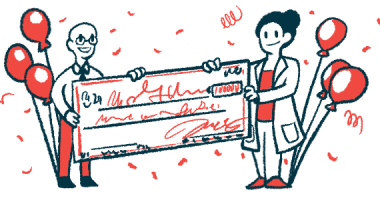Music Therapy Helps Relieve Pain in Adults with Sickle Cell Disease, Pilot Trial Suggests

Music therapy can help ease pain in adults with sickle cell disease (SCD), a pilot study showed. A single session of music improvisation with a music therapist helped significantly diminish the intensity of patients’ pain and uplift their moods, the study noted.
The research, titled “The Effects of a Single Electronic Music Improvisation Session on the Pain of Adults with Sickle Cell Disease: A Mixed Methods Pilot Study,” was published in the Journal of Music Therapy.
Many patients with sickle cell disease, particularly adults, often experience episodes of pain, including acute pain crises, chronic pain, and neuropathic (nerve) pain.
Pain can result from chronic inflammation due to the obstruction of blood circulation by sickled red blood cells. Organ damage and increased sensitivity to pain due to the use of opioids as painkillers also can occur.
Other contributors include psychological, social, cultural, and spiritual factors.
“Therefore, pain is a multidimensional, personal phenomenon requiring a multimodal approach,” researchers said.
Music therapy can influence the sensory, cognitive, and affective dimensions of a patient’s pain while avoiding the side effects that many painkillers have. Music is capable of refocusing a patient’s attention away from painful stimuli and reduce the feeling of pain.
The pilot study, led by researchers at University Hospitals Connor Integrative Health Network and Seidman Cancer Center in Cleveland, Ohio, investigated the feasibility and efficacy of using electronic music improvisation to relieve pain in adults with sickle cell disease.
In the randomized controlled trial, 60 adult patients were assigned to one of three 20-minute conditions: a session with a music therapist, a session of recorded music listening, or no intervention at all (the control group). All participants continued to receive standard of care treatment.
Both music interventions were adapted to patient preferences. The music improvisation session was created according to patients’ favorite genres: rhythm and blues, gospel, soul, hip-hop, or jazz. In the music listening group, patients selected the music they wanted to listen to.
Compared to the control, a single session with a music therapist reduced by five times the intensity of pain, as measured by the VASPI scale, and raised by 11 times the patients’ moods, as assessed by the VASMOOD scale.
Music listening uplifted patients’ moods but did not reduce the pain’s intensity, suggesting that engagement with a musical therapist is important.
When patients were interviewed about their experiences, a majority reported that sessions with a music therapist and music listening were positive experiences with few negative effects.
Participants most often described both interventions as distracting and calming, helping them to forget about their pain or relieve them from experiencing it.
“When you are socially and cognitively engaged in music therapy, it has a greater effect on your mood and the way you experience pain,” Samuel Rodgers-Melnick, musical therapist at UH Connor Integrative Health Network and first author of the study, said in a news release.
One patient in the musical therapist group said “the activity really helped me, and I didn’t focus on what was making me depressed. I just focused on trying to keep up with the beat of the music that was playing.”
“We are very enthusiastic about music therapy, and its promise for improving the lives of people who have sickle cell disease,” said Jane Little, MD, director of the Adult SCD Clinic at UH Seidman Cancer Center and senior author of the study.
“Our results support the value that music therapists contribute to our patients’ overall pain management and experience of care,” she added.
Rodgers-Melnick has also developed a program called BEATS (Build/Educate/Advance/Transition in SCD) that provides educational tools for sickle cell patients. The program is currently used in therapy sessions at the UH Seidman Cancer Center.






